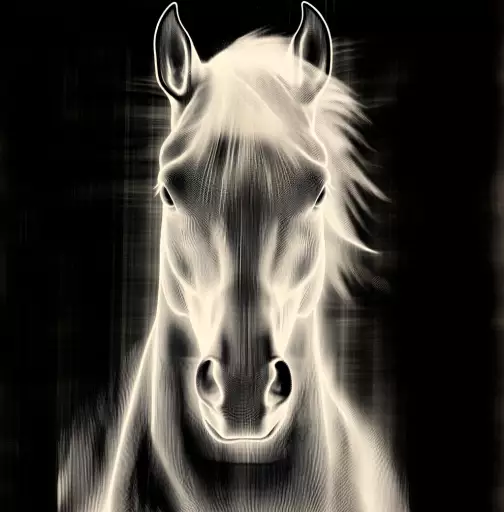Explore the Best AI Image Gallery

The Algorithmic Brush: How AI is Reshaping Graphic Design
For decades, graphic design has been a realm where human creativity reigned supreme. But the emergence of artificial intelligence (AI) is ushering in a new era, blurring the lines between human ingenuity and machine learning. AI-powered tools are no longer simply automating tedious tasks; theyre becoming collaborative partners, pushing the boundaries of design and inspiring fresh perspectives.
A New Palette of Possibilities
AI is transforming graphic design in several profound ways:
- Automated Design Generation: AI algorithms can generate various design elements, from logos and typography to website layouts and social media graphics. This automation frees up designers to focus on higher-level creative tasks and strategic thinking.
- Personalized Design Experiences: AI can analyze user data and preferences to create personalized designs that resonate with individual tastes. Imagine websites or marketing materials that adapt in real time to the viewers interests.
- Enhanced Creativity: AI can act as a brainstorming partner, suggesting novel ideas and design concepts that might not have occurred to human designers. By exploring vast datasets of existing designs, AI algorithms can identify patterns and trends, leading to unexpected and innovative solutions.
Applications Across the Design Spectrum
The impact of AI extends across diverse areas of graphic design:
- Branding and Identity: AI can help craft unique brand identities, generating logos and color palettes that reflect a companys values and target audience.
- Web Design: AI-powered tools can create responsive website layouts that adapt seamlessly to different screen sizes and devices. They can also optimize web pages for user experience and search engine rankings.
- Marketing Materials: AI can personalize marketing campaigns by generating targeted visuals, such as social media graphics or email headers, tailored to specific customer segments.
Ethical Considerations in the Age of AI Design
As with any powerful technology, the integration of AI into graphic design raises ethical considerations that must be addressed:
- Bias and Fairness: AI algorithms are trained on vast datasets, which can contain biases that perpetuate existing inequalities. Its crucial to ensure that AI-generated designs are fair and inclusive.
- Transparency and Accountability: The decision-making processes of AI algorithms can be complex and opaque. Designers should strive for transparency in how AI tools are used, and there should be clear accountability for the outcomes.
- Job Displacement:** While AI can automate certain tasks, its important to consider the potential impact on graphic designers jobs. Upskilling and retraining programs will be essential to help designers adapt to this evolving landscape.
The Future of Design: A Human-AI Partnership
The future of graphic design lies in a symbiotic relationship between human creativity and AI technology. AI will empower designers with new tools and capabilities, enabling them to achieve greater efficiency and explore innovative concepts. The role of the designer will evolve from primarily technical execution to strategic vision and creative leadership.
The key is to harness the power of AI while retaining the essential human elements of empathy, intuition, and artistic expression. As we navigate this exciting new era, the most compelling designs will be those that blend the strengths of both humans and machines, resulting in a truly collaborative and transformative creative process.













![**Representation: A teenager smiling while thinking about a friendly dog, a comic-style thought bubble with a friendly dog inside. Graphic style: Line drawing, cartoon style, influenced by Franco-Belgian comics, thick black lines, simplified design, vector, black and white only, in the style of Keith Haring or the French comic strip "Alinéa". [IMPORTANT]: A single continuous line extending from one side of the image to the other, minimalist, strong outlines, line drawing, without lifting the hand, ultra-simplified, no shading, entirely white image, drawing created in the center of a sheet of paper. --ar 16:5** - <@627984126871470085> (fast)](https://images.ai-img.art/thumbnails/150/6fc850f638e3dee0c4b121acecad2c8419e02bdeac7f871d625f1003c1c3abe1.webp)



![**Representation: A dog acting as a private tutor to a child. The dog holds a ruler in its paw and stands at the blackboard to explain a dog diagram to the child. Graphic style: Line drawing, cartoon style, influenced by Franco-Belgian comics, thick black lines, simplified design, vector, black and white only, in the style of Keith Haring or the French comic strip "Alinéa". [IMPORTANT]: A single continuous line extending from one side of the image to the other, minimalist, strong outlines, line drawing, without lifting the hand, ultra-simplified, no shading, entirely white image, drawing created in the center of a sheet of paper. --ar 16:5** - Variations (Strong) by <@627984126871470085> (fast)](https://images.ai-img.art/thumbnails/150/f4e034998ccd869d8a061fd12017514fcd92210eb33d4222dc9b54716223f4dd.webp)







](https://images.ai-img.art/thumbnails/150/157712d76865d557120f9baf988de3d0525225295a2789c89bf2c4a5a96a03d1.webp)




![**Representation: A dog acting as a private tutor to a child. The dog holds a ruler in its paw and stands at the blackboard to explain a dog diagram to the child. Graphic style: Line drawing, cartoon style, influenced by Franco-Belgian comics, thick black lines, simplified design, vector, black and white only, in the style of Keith Haring or the French comic strip "Alinéa". [IMPORTANT]: A single continuous line extending from one side of the image to the other, minimalist, strong outlines, line drawing, without lifting the hand, ultra-simplified, no shading, entirely white image, drawing created in the center of a sheet of paper. --ar 16:5** - <@627984126871470085> (fast)](https://images.ai-img.art/thumbnails/150/7a854648a81e51241dcca8d24dd6e3bfcf07ad1df51baf401c9b729f4cf411fa.webp)
](https://images.ai-img.art/thumbnails/150/51c93500396faff4e7fa8b42bc68033067b16b2230e3496e95c482a581ff0fe9.webp)












](https://images.ai-img.art/thumbnails/150/9d51c5e673b4f2068b7b01abc35425a06f173b76303adf9ad29ca14302c25b18.webp)